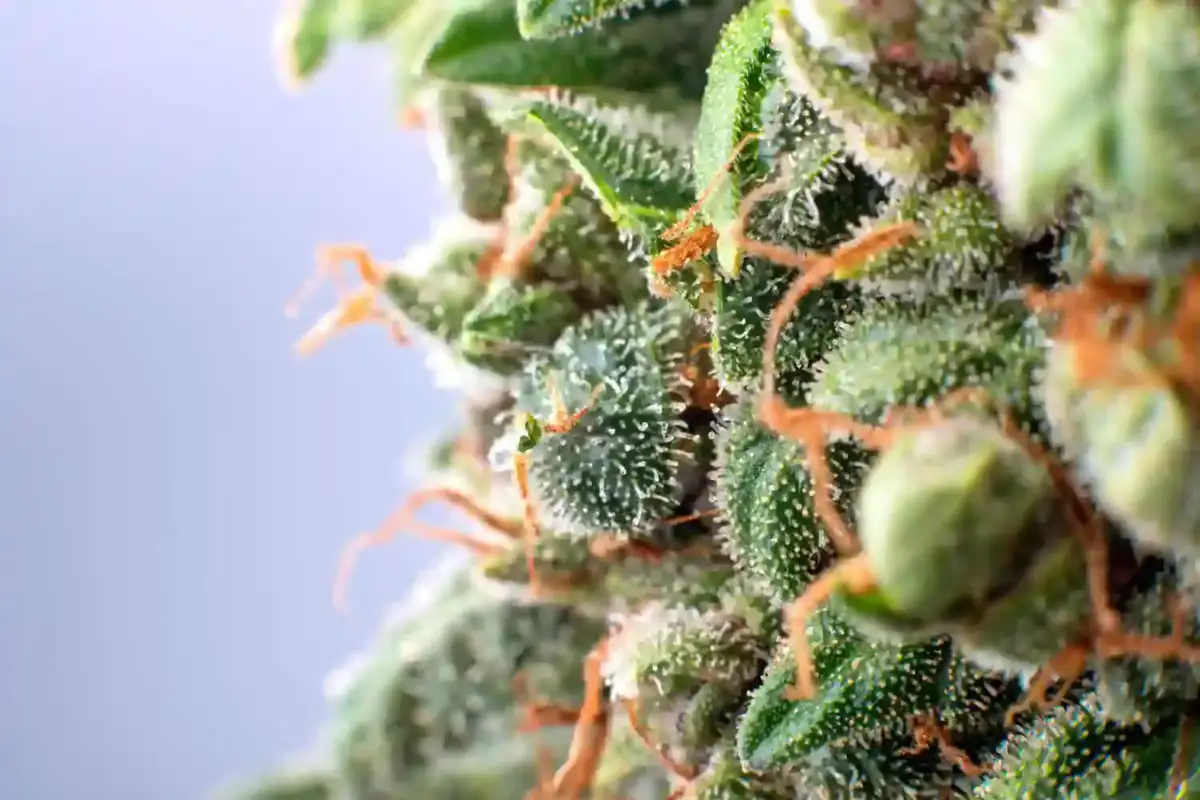An estimated 1.2 million people in the United States have HIV, and roughly 34,800 new cases get reported every year. HIV comes with multiple complications and can evolve into serious stages. Screening and treatment for infection have improved over the years. A person can live a quality life while they manage HIV.
People have even begun looking into marijuana for assistance. While some people use cannabis products for recreation, others use them for medicinal purposes. Medical marijuana has multiple benefits to help you with some of the adverse effects of HIV. Continue reading to learn more about marijuana and HIV.
 Common HIV Symptoms
Common HIV Symptoms
If someone has HIV, they could experience multiple symptoms. You may not experience all of them, but you should speak to a doctor if you believe you have HIV. Many of the warning signs are similar to those of the flu. Some people might confuse the two, but it is necessary to keep an eye out for anything that could hint at HIV.
Potential minor symptoms include:
- Aching muscles
- A fever
- Nausea
- Mouth ulcers
- Tiredness
- Chills
- Sore throat
- Enlarged lymph nodes
The severe form of HIV can result in:
- Memory loss
- Red or brown patches inside the mouth
- Sores in the mouth or genitals
- Diarrhea
- Depression
A person can experience minor symptoms for a few days, but others can have them for several weeks. Additionally, symptoms can change as the disease progresses.
Stages of HIV
HIV goes through multiple stages, especially if the person has not sought treatment. A person can feel the effects of the disease as time passes. Here are the phases of the infection.
Acute HIV
The earliest stage is called acute HIV, and it is when a person’s blood contains a considerable amount of the virus. The disease is highly contagious during this phase since it can multiply quickly. The body’s immune response starts to fight off the infection. Symptoms begin to appear within the first couple of weeks.
Acute HIV can last weeks before it progresses. During this time, the virus attacks the body’s CD4 T lymphocytes, or the CD4 cells. The role of CD4 cells is to activate other cells and organize the immune system’s response. As a result of the damage, the body has a difficult time fighting the infection.
Chronic HIV Infection
The next phase of HIV is chronic HIV infection. Sometimes called clinical latency, the virus continues to multiply and spread throughout the body. The amount that replicates is considerably small compared to the acute stage. The number of CD4 cells continues to lower as HIV damages the immune system.
People usually do not display any symptoms. Nevertheless, they still can transmit the disease to others if they do not use any treatment. The time it takes for chronic HIV to move onto the next phase varies. In many cases, the second stage lasts roughly 10 years. Someone could end up waiting more than 10 years, and others progress sooner.
AIDS
Most people refer to the final stage as AIDS, and symptoms tend to be more serious. Some individuals experience rapid weight loss and frequent night sweats. A person can get various severe illnesses known as opportunistic infections. Examples include pneumonia or infection-related cancers.
A patient typically receives an AIDS diagnosis if their CD4 cell count drops too low. Transmission can occur readily due to a high viral count. It is crucial to receive treatment as soon as possible.
How to Screen for HIV
Nucleic Acid Tests
If you need to know if you contracted HIV, there are different tests you can take. Most tests have a 99% accuracy rate. One of the screenings is nucleic acid tests (NAT). A NAT draws some blood to look for the presence of the virus in your system.
You can use this method to know if you have HIV or the amount of the virus in your blood. A NAT detects HIV sooner than other types of tests. Usually, you can use it about 10 to 33 days after infection. However, the test can be costly.
Antigen/Antibody Tests
An antigen or antibody test searches for signs of HIV antibodies and antigens. Antigens are particles that activate your immune system. Your immune system produces antibodies to fight diseases. In response to HIV, antigen p24 gets made before the antibodies do. These tests look for those specific antibodies and p24 antigens from a blood sample from the veins.
The best time to use an antigen/antibody test is between 13 and 42 days after exposure. You should look for the ones with the label “fourth generation” since they are the newer tests.
Rapid Oral Test
If you want an easy test to perform at home, you can use a rapid oral test. The test works by swabbing the area between the teeth and gums. The purpose is to collect oral fluid. Oral fluid is the mixture of saliva and something called oral mucosal transudate.
For better accuracy, you should use a rapid oral test when you have had the infection for a while. The recommended period is 23 to 90 days after exposure. The test is not beneficial for early screenings.
Rapid Blood Test
Another quick test you can do is a rapid blood test. Rapid blood tests are about as accurate as lab tests. All you need to do is prick your finger for a blood sample. The test can detect the presence of antibodies related to HIV.
Many people take rapid blood tests between 18 and 90 days after infection.
HIV Treatment
Antiretroviral Therapy
A common method of treatment is antiretroviral therapy (ART). Everyone with HIV can take ART, and the treatment involves multiple medicines daily. Many regimens involve three antiretroviral (ARV) medications from two different HIV drug classes. The number you take depends on which ones are effective for you.
ART does not cure HIV, but it prevents the virus from multiplying. Your immune system has enough time to recover from the damage. As a result, people can live longer, healthier lives. Research also has shown that ART makes HIV have an undetectable viral count. The risk of transmission lowers by roughly 93% after the early application of the treatment.
Fusion Inhibitors
One type of ARV medicine you can take is fusion inhibitors. Fusion inhibitors prevent HIV from entering CD4 cells. Therefore, the virus is unable to take control of the immune cells. Some people experience fatigue, itchiness, and nausea as side effects of fusion inhibitors.
Integrase Inhibitors
Integrase inhibitors stop the disease from making copies of itself. HIV uses an enzyme called integrase to allow the virus’s DNA to merge the DNA of CD4 cells. The inhibitors block the enzyme to prevent the spread of HIV in the body.
Pharmacokinetic Enhancers
Some people also take pharmacokinetic enhancers as part of their treatment. The enhancers improve the effectiveness of other HIV drugs. It works by slowing the breakdown of other medicine. The medicine can remain in the body at a higher concentration for a longer duration.
Medical Marijuana and HIV
A person can use medical marijuana after they receive an HIV diagnosis. More and more patients are using cannabis strains to help with some effects of HIV. Some people might be skeptical, but the plant provides plenty of benefits for symptoms. People can have an easier time living with HIV.
HIV Patients Can Benefit From Medical Marijuana
Counters HIV Wasting
HIV wasting is when you lose more than 10% of your body weight. HIV can alter the body’s metabolism and cause inadequate absorption of nutrients. You might experience feelings of weakness and fevers as well. While eating can counteract the loss of body fat, symptoms like nausea and a lack of appetite can interfere. Marijuana contains an active cannabinoid called dronabinol.
Dronabinol helps enhance people’s feelings of hunger upon consumption of a marijuana strain. However, weight gain can vary. A few studies have found that the use of dronabinol can lead to a total body weight change of up to 3.2 kilograms or 7 pounds. The THC cannabinoid also promotes hunger.
A person with advanced HIV wasting may be able to stabilize their weight and even gain a bit of muscle mass. You can get dronabinol in oil-filled capsules. Some individuals prefer to smoke marijuana for the appetite-inducing effects.
Alleviates Nausea
Many people with HIV experience nausea and vomiting. The quality of life lowers for people who have these types of symptoms. Someone might use herbs or medications to deal with nausea, but treating it can be difficult at times. However, medical marijuana can reduce the risk of vomiting.
People have been using marijuana to help with nausea for decades. Research can support the use of marijuana products for the symptom. In a study, 886 people took cannabis and observed changes in their levels of nausea. After approximately one hour following consumption, an estimated 96.4% of participants noticed relief.
The level of the effect can depend on the type of strain you use. Additionally, flowers and concentrates had high results than edibles and tinctures. If HIV gives you nausea, you can rely on medical marijuana for help.
Reduces Pain
HIV can cause a condition known as peripheral neuropathy. Peripheral neuropathy is when the peripheral nervous system sustains damage. The exterior of nerve cells gets stripped away to leave the nerve endings exposed. As a result, people feel painful discomfort or tingling sensations in their hands and feet.
HIV can impact the central nervous system and cause other forms of neuropathy. Early versions of HIV medicine are associated with peripheral neuropathy as well. Overall, research has found that medical marijuana can reduce the painful effects of HIV-related neuropathy. Many participants reported a 30% reduction in pain.
Marijuana has anti-inflammatory properties. The body has an endocannabinoid system that regulates pain signals and inflammation with CB1 and CB2 receptors. Marijuana interacts with these receptors to reduce pain.
Helps With Insomnia
Roughly 70% of individuals with HIV have insomnia. If you struggle with falling or staying asleep, you could benefit from medical marijuana. Many people use marijuana products to help them sleep. About 70% of adults reported using marijuana casually to sleep.
Cannabinoids bind with the receptors in the brain to raise the level of sleep-promoting adenosine. At the same time, they restrain the brain’s arousal system. Higher doses of cannabidiol (CBD) also promote feelings of tiredness.
When you use marijuana, the sleep-promoting effects help reduce insomnia. Not only do people fall asleep, but their quality of rest also improves.
What Is the Best Marijuana Strain?
When buying a medical marijuana strain, you should look for the right characteristics. The characteristics can depend on the symptoms you develop. You should look for products that are efficient in providing an energetic effect if you suffer from fatigue. Overall, sativa strains offer people more energy and brain stimulation. Additionally, a person’s mood can improve.
However, you might want to look for an indica strain if you deal with insomnia due to HIV. A strain of the species is known to help people relax and ease muscle tension. Look for a product that lists a high amount of CBD.
You might need medical marijuana for pain relief as well. Researchers found that people preferred indica strains when reducing pain. Indica and sativa strains help with nausea. To induce your appetite, look for products with a high THC level.
Where can I get CBD in Las Vegas?
If you are looking for cannabis to relieve symptoms of HIV or AIDs, please come to Inyo Fine Cannabis Dispensary. We pride ourselves in expert knowledge of cannabis and only offer the best marijuana in Las Vegas. See the cannabis products we offer on our online menu and order delivery, curbside pickup, or swing by the store.


 Common HIV Symptoms
Common HIV Symptoms